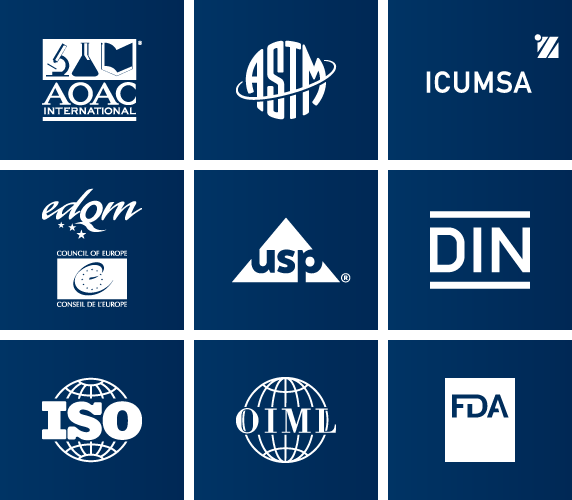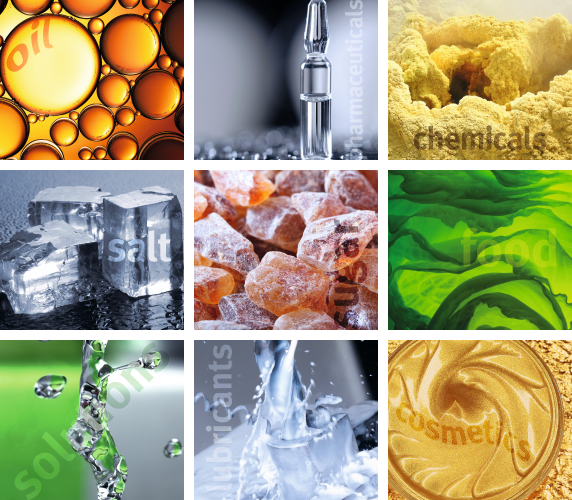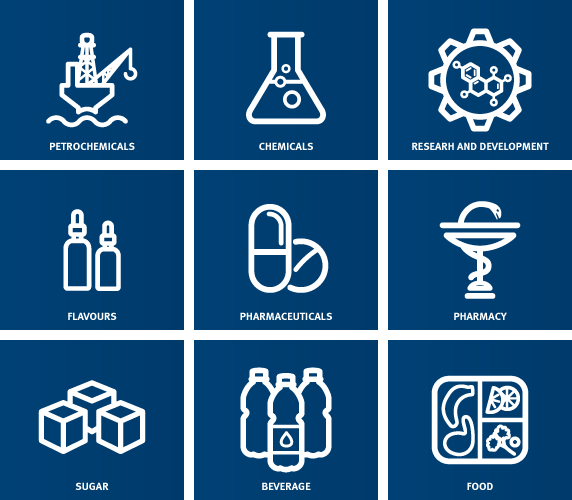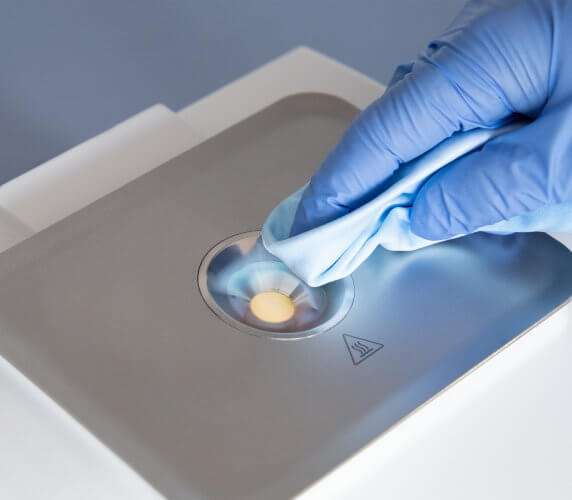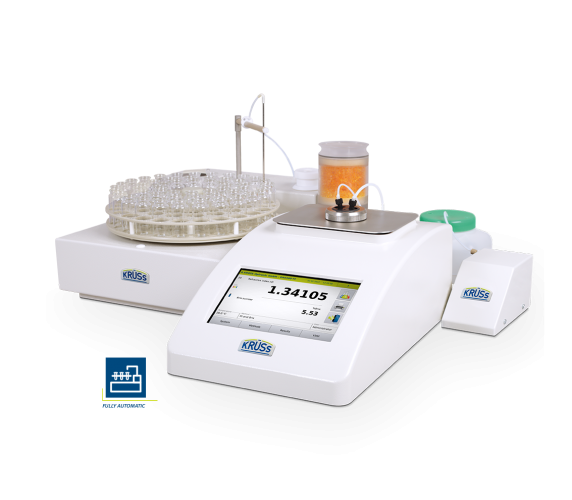Refractometry
Refractometers are widely used analytical instruments in quality assurance. To name just a few examples: They measure the refractive index and determining the purity or concentration of ingredients or the sugar content in liquids.
Here you can learn more about the background of this very reliable measuring technique: How does the measurement work and which samples can be measured? How is a refractometer quickly and thoroughly cleaned or calibrated? Does the refractometer fulfil the standard specifications of the measuring task? Which instrument is suitable for the desired application?
Infobox Refractometry
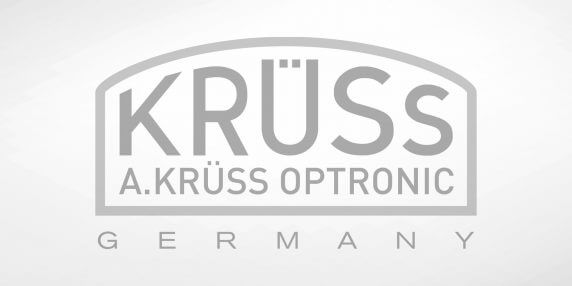

All samples can be measured
From bright to dark, from basic to acidic, from a low to a high viscosity – our refractometers can measure almost any sample. A high-quality optical system, an intelligent analysis logarithm and a powerful LED allows you to measure extremely challenging samples such as non-homogeneous samples such as fruit juices with pulp, opaque samples such as heavy oils or emulsions such as cosmetics. Aggressive acids and bases can be easily measured using a chemical resistant stainless steel measuring tray and a sapphire prism. Even foils and solids can be measured by using a high-refractive contact liquid.
Influencing factor temperature
If the temperature of a sample varies by 1 °C, this will then become already apparent with the fourth decimal place of the measured value. A precise temperature control is therefore extremely important in order to ensure a high accuracy and reproducibility of the measurement results. This is realised either through a built-in Peltier element or through external thermostats. This allows for standard-compliant measurements at various temperatures, for example, at 20 °C (Ph. Eur) or at 25 °C (USP). A quick temperature control should be ensured; this will save a lot of time in case many temperature changes take place.
Peltier temperature control
The built-in Peltier element makes it possible to control the temperature of samples within a range of 10–80 °C in order to be decoupled from external temperature influences. The selected temperature has a very high accuracy of up to 0.01 °C ensuring the comparability and reproducibility of the measurement results. An extremely homogeneous temperature control also rules out any measurement deviations due to temperature gradients. In addition, our temperature control offers short heating and cooling times; temperature changes between 20 °C and 70 °C are achieved in less than four minutes.
Temperature compensation
A temperature control of the measurement sample is not required when sugary beverages and confectionary products are measured. A conversion table published by the ICUMSA, which shows the influence of temperature on the refractive index of sucrose, glucose, fructose and invert sugar solutions, makes this possible. Since the influence of the temperature on the measured value is known, it is possible to take measurements at any ambient temperature and to automatically convert them to the desired reference temperature – often 20 °C. Temperature differences will also be automatically compensated.
Calibration and adjustment
The refractometer should be inspected on a regular basis to ensure that it delivers reliable measurement results. An easier method is the testing of the water value. The refractive index (nD) of distilled water at 20 °C (589 nm) is exactly 1.33299. If this value is not met, you can use the tare function to carry out a one-point adjustment; the device adjustment is compared with the currently measured value. Certified, traceable standards, which we also use for every commissioning, IQ/OQ/PQ or annual maintenance work, are recommended for a subsequent calibration in order to validate the specified measurement accuracies of our devices.
Scales
There is a relationship between many physical measured variables. If these dependent relationships are known, you will only have to measure one variable from which all the others can be calculated. In the field of measurement technology we refer in terms of scales, for example, when the refractive index is converted into a suitable substance-specific unit. Of over 100 commonly used scales, the most frequently used is the BRIX scale. It is used for determining the sugar concentration in aqueous solutions and is often pre-installed on refractometers. This scale (1%BRIX corresponds to a 1% sucrose/water solution) is used widely, e.g. for content determination in the chemical or automotive industry. If standard scales are no longer sufficient, the formula editor in our digital refractometers helps. It can convert individualised mathematical relationships between concentration and nD value into a formula.

